The demand for “natural” and safer products is skyrocketing as more people realize that many synthetic additives can disrupt hormone, place an extra load on our detoxification systems and cause allergic skin reactions. Of course, the big brands don’t want to lose our business and go to great lengths to tell us that their product is healthy, using misleading terms like vegan or natural, that imply a level of safety and quality that isn’t necessarily there.
I’ve been disappointed time after time reading the labels on skin-care products at health foods stores – rejecting one pretty bottle after another because despite the packaging with muted colors exclaiming their natural, organic status (and a price tag to match), they contain the same nasty stuff that I simply don’t want on my skin. Perhaps I have an advantage at reading labels, being a chemist and having started my career in manufacturing for L’Oreal USA, yet it frustrates me that the public is being fooled into thinking that their money is well spent on these products.
How do we make smarter choices? Is there anyone leading the way?
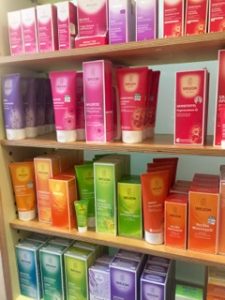 In America, European products are synonymous with quality. We often look to European standards to stay up to date on the latest list of what ingredients are considered toxic and beauty brands like Weleda and Green People are known around the world.
In America, European products are synonymous with quality. We often look to European standards to stay up to date on the latest list of what ingredients are considered toxic and beauty brands like Weleda and Green People are known around the world.
Since eliminating exposure to toxic chemicals in household and beauty products is such an important part of the Migraine Freedom program, I decided to see what insider secrets I could learn from one of the early crusaders in the German natural cosmetics movement while I’m living in Berlin this winter.
I sat down to speak with Frau Monika Krause, Owner of Berlin-based natural cosmetic store TIARÉ (www.TIARE.de) about the history and development of the natural cosmetics industry in Germany over the past 30-40 years.
She opened the store in 1991 and has seen the exponential growth of interest in natural products during this time as well as some concerning trends in the industry as conventional manufacturers scramble for a piece of the pie. Having been a part of the movement from the beginning and having intimate relationships with the producers throughout Germany, she’s developed an expertise in sourcing ingredients and differentiating the good, simple products from the marketing hype that is as pervasive in Germany as it is in the US.
Here’s a quick video of the store – a destination itself inside of the Prenzlauer Berg neighborhood and a very quick hello from camera-shy Frau Krause.
#1 Take Away
With the growing demand for natural and healthy products, we consumers need to become educated on the ingredients and manufacturing standards to be able to make informed decisions instead of relying on label claims like “natural” or “vegan”. Mineral oil, triclosan and oxybenzone are all vegan… and at the same time all adding to the toxic burden on your own body and the planet. This problem is as much of a concern in Germany as it is in the US.
What surprised me the most from this interview
I was under the false impression that there were government regulations in Europe controlling the standards for natural products. In fact, a number of different standards are maintained by various private associations – to which the companies commit and self-regulate. The standards and increasing number of natural products and brands is driven by consumer demand (in other words, we can’t wait for someone to “save us” – we have to get smart and get picky).
Fun fact I learned from Monika
That as recently as 30 years ago in East Germany people made their own skin creams with lard. Before you say yuck – this is kind of a thing, even today when we can order online from Sephora.
Example 1) Apparently lard is a current trend with the farm to table types
Translated interview (slightly paraphrased for readability in English)
Erin: The demand for organic and natural products is very apparent, even just being in Berlin for one week so far– I see it everywhere! Surely there is a difference in natural products one is buying at the grocery store vs. a specialty store like this?
Monika: There’s been an explosion of interest in organic and natural products in the last decade and in just the 5 years or so that is actually creating a bit of a problem with manufacturers just putting the words and claims (“bio”) on the label.
In both food and cosmetic industry, the term natural isn’t regulated or protected.
E: Not even the term “bio” or organic is regulated?
M: There are certain labels and recognized certifications from privately formed organizations that have strict requirements, but it is all self-regulated by an association of companies that has a commitment to quality (Naturkosmetik-branchen).
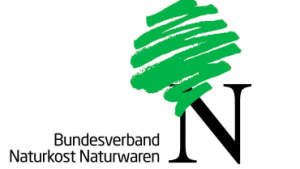 The association has really grown and developed over the past 30-40 years. The biggest producers agreed on certain minimum quality standards – both for Germany and for Europe.
The association has really grown and developed over the past 30-40 years. The biggest producers agreed on certain minimum quality standards – both for Germany and for Europe.
The most important German “label” or “seal” for quality is BNN.
It is the manufacturers responsibility to uphold the standards after they’ve joined one of these associations.
E: So there aren’t any European or German laws or regulations governing these standards at all?
M: No – only self-regulation.
And now there are a lot of conventional manufacturers that are jumping on the organic- bandwagon because of how trendy it is, without participating in the self-regulating associations.
The reason demand has grown so much for natural cosmetics is because many customers have experienced rashes and skin allergies and that has greatly increased awareness about ingredients and quality.
It is a bit of a paradox though, because these self-imposed quality standards in the cosmetic industry are actually stricter than in the food industry, and we still see ingredients in food that would never be used by natural cosmetic producers.
E: So at this point, as a consumer you have to get to know the different labels and seals of quality and then choose products based on the ones that meet your own personal standards?
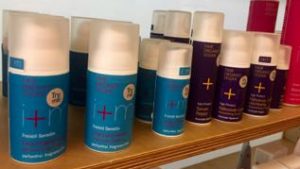 M: Yes, I have the impression that customers are really depending on these seals without understanding in detail what the ingredients are or about the different levels of quality, or even knowing the difference between the different labels or seals.
M: Yes, I have the impression that customers are really depending on these seals without understanding in detail what the ingredients are or about the different levels of quality, or even knowing the difference between the different labels or seals.
That’s where a specialty shop like ours comes in. We take the time to research the different lines and products and only bring in what is really good. We look at the seals of course, and I do trust those, but we also know that the seals cost a lot of money for a small company to get. There’s a whole testing and certification process that may be beyond the capability of a homegrown, new product.
As a shop, we also evaluate many small, fine producers that come in and talk to us about their ingredients and processes and end up often carrying their lines as well even if they haven’t been able to afford the certification process yet. So for us, the seal isn’t the only thing, we look very carefully at the ingredients of the products.
E: Do you think it would be better if there were actual laws governing the standards for organic and natural products?
M: Of course it would be better, but it will never happen because a government doesn’t have the health of the people in mind and doesn’t find it relevant for society as a whole to regulate this type of thing. It is ultimately the responsibility of the citizens.
I notice that young people today are taking on this responsibility, and seeking out the products that they believe in.
On that note, there are these apps now that many have on their phones where you can scan the barcode of a product and get a rating for how healthy, animal-friendly, environmentally friendly, etc is. You just have to do your own research first on the specific app and see if you agree with their standards and criteria!
Vegan is another trend where one must be very careful. There are certain products, where yes the animals are being protected, but there is nothing easier than replacing beeswax, for example, with synthetic thickeners. This is also common with the colorings in makeups – red dye from beetles is replaced with a synthetic so that it can be vegan. But these synthetics are not allowed under the natural cosmetic guidelines.
Vegan is a really big term now that companies are using to make themselves look healthy and good, while their products are still full of cheap synthetics.
The natural cosmetic movement that started 30-40 years ago was originally about man and animal and the environment responsibility – the whole circle and relationship.
Of course the movement has been caught up in capitalism like anything else and for me, the term “vegan” is just being exploited to make things seem healthier than they are.
This is a real problem in the industry today to me.
E: Has a lot changed in the awareness of the customers since you opened in 1991?
Yes, and more than anything there are just more people interested and more customers than ever. Organic is such a trend right now – there are more organic eggs being sold in Germany than there are even chickens to produce them. It’s nonsense. There are a lot of people jumping on the bandwagon, clearly.
I always tell people the price should be able to tell you something. We will never be able to mass-produce something at the same high quality that you can achieve with a small company.
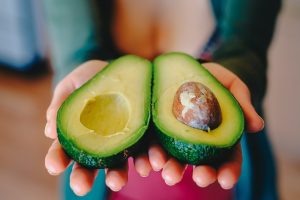 For example, take avocado oil. In the first pressing it is dark green brown.
For example, take avocado oil. In the first pressing it is dark green brown.
But the avocado oil used in the conventional cosmetic industry is from the 15-20th pressing! It is light yellow at that point.
On the label, however – both are simply avocado oil.
There is no way to know the difference on a label, but this is what makes a difference in the price.
So part of what I do is educate customers for example “if you think that you are getting a top quality almond oil for 2 Euros, I’m sorry but it isn’t truly a quality product.”
Or there is this company selling essential oils – every oil for 5 Euros. It is just silly to think that you can get quality orange and sandalwood oil both for 5 Euros. You just have to know that those aren’t authentic products.
Sometimes customers will complain that natural cosmetics are expensive – but it isn’t really the case because you use less and it works. It’s just like food, quality over quantity. You don’t need 10 types of toppings on the table; one salad with 4 ingredients is probably healthier.
E: Have you seen any cases where someone’s health greatly improved when they switched from conventional to natural products?
M: Oh yes, eczema for example is becoming more and more common. It is both a big health and beauty problem. A person has to look at how they eat, evaluate their alkaline-acid balance, and then also pay attention to the products that they put on their skin.
If they start eating and taking care of themselves with alkaline products, they’ll notice a difference within 2-3 weeks. It’s transformative. Relatively few people know about this alkaline principle, although it is starting to grow as people realize that it is part of the path to natural diet and lifestyle.
As more clients develop an interest in this, we’ll see more product lines come about to serve this population.
E: Well… that’s why we do interviews to spread the word, right?
So where does your passion for natural cosmetics come from? Clearly it started WAY before it was trendy.
M: Well, we opened the store back in 1991. My business partner at the time and I were from the East German side and had lost our jobs when the wall came down, so we decided to go into business and opened this shop.
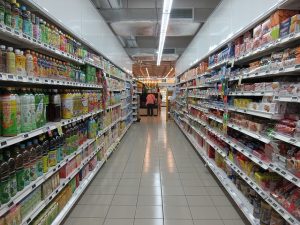 When the wall first came down, we were not accustomed to having SOO many products to choose from. Walking into a West Berlin drug store, there were 500 products to choose from and it was overwhelming. I didn’t know what was good or bad, healthy or toxic.
When the wall first came down, we were not accustomed to having SOO many products to choose from. Walking into a West Berlin drug store, there were 500 products to choose from and it was overwhelming. I didn’t know what was good or bad, healthy or toxic.
Back in that time there were only about 5 natural cosmetic products to stock in our store, so right from the beginning when we decided to focus on natural products, I was thankful that instead of having to choose from 500 different products, I had 5 simple choices to use for my own personal routine and was very thankful for that. I felt like I had found my path.
Side note from Erin: Pause here for a minute to think about what this must have been like. It took me a minute to appreciate what it would have been like to go as an adult from just a few options to 500 choices (for cosmetics, but also for food and everything else). Whew. One of my all time favorite TED Talks is on the Paradox of Choice by Barry Schwartz and he talks about how wonderful yet mentally exhausting it is that we have many flavors and colors of everything to chose from these days.
M: I was very happy to have a store that I could full heartedly support and be proud of. I was misleading or selling anyone on any lies, nothing to be ashamed of. Since the beginning it’s been about supporting health and community. At the beginning it was a very tiny movement, we knew all the manufacturers personally.
E: Were any of them from the East?
M: No, they were all from the West. Those companies started in the late 70’s and early 80’s – the real pioneers. And there weren’t a lot of shops at that time, and we didn’t have a lot of products at the beginning. Of course we have grown a lot – now even in our shop there are so many brands that you have several choices.
E: Pre-1989 – in the east did people have to make their own products if they wanted something natural?
M: A lot of people did make their own, yes. Many people made a cream with lard, for example. It worked…
E: Could you buy make-up and skin care products from the West?
M: No, you could buy cosmetic products but they were all made in the East and the East had our own brands. Even if you bought something, there were just fewer ingredients back then. It was healthier simply for the reason that there weren’t a lot of ingredients.
There wasn’t much competition between companies either, so they didn’t have to lie and do “marketing.”
Sure, they did use petroleum products and synthetic fragrances, but there were definitely less ingredients overall and less products. That was the good part. Why should one have to choose between 100 products, when 10 is really enough.
In my experience, back in the DDR times, fewer people had skin problems compared to today. It was a simpler time. No high-tech cosmetics – just simple products.
E: Final thoughts you would like to share?
M: I hope the interest from customers in natural care and nutrition continues to grow.
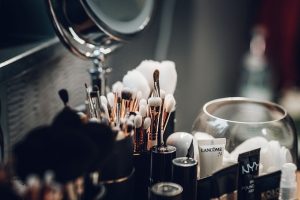 I actually think that there is a little too much emphasis on personal maintenance and not enough on nutrition and quality. One doesn’t need to constantly seek a new and better skin cream. It’s very simple – less is more. But that less needs to be good, of good quality so that the skin is nourished. The rest – the skin and the body has to take care of itself. That’s actually the difference for natural cosmetics. Instead of trying to fix something we are letting the skin repair itself. The skin is our biggest organ and we need to take care of it. I think more and more people will develop an interest on the relationship between our inner health and outer beauty.
I actually think that there is a little too much emphasis on personal maintenance and not enough on nutrition and quality. One doesn’t need to constantly seek a new and better skin cream. It’s very simple – less is more. But that less needs to be good, of good quality so that the skin is nourished. The rest – the skin and the body has to take care of itself. That’s actually the difference for natural cosmetics. Instead of trying to fix something we are letting the skin repair itself. The skin is our biggest organ and we need to take care of it. I think more and more people will develop an interest on the relationship between our inner health and outer beauty.
One thing I am concerned about though is that certain raw materials just aren’t available in the quantities that they used to be, because we humans are depleting the supply. There’s a dwindling selection of raw materials because the world’s resource supply is becoming exhausted. I think humans need to reconsider relying on new and high-tech and look to what is simple and natural.
In closing, I truly appreciate Monika sharing these perspectives and her time with me. I hope that by sharing how the consumer demand for truly pure and clean products has driven the formation of quality standards in Europe – that we can start to vote with our dollars and create a HUGE change in the right direction in the US as well.

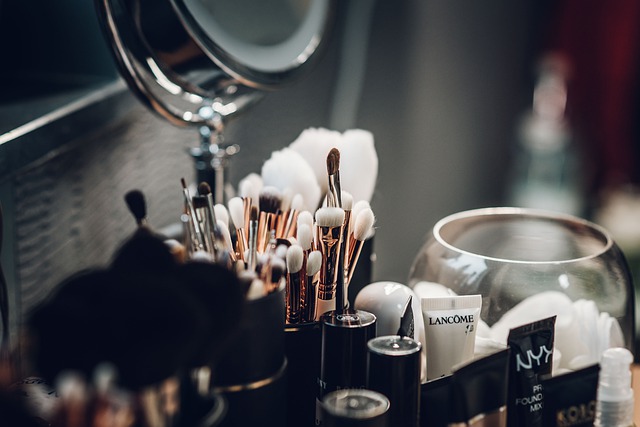
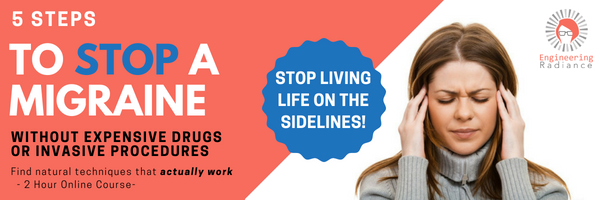

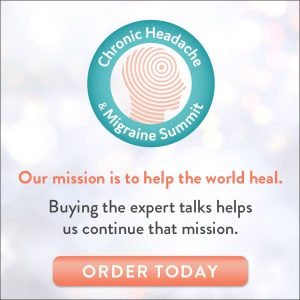
Interesting story! I was shocked to hear that Europe has similar issues with greenwashing and lack of regulation. Have a great stay there!
Yeaaaa, I have to say I was a bit disappointed – but it is somewhat easier to find good products and very, very fresh organic foods.
Awesome content! I very much agree with these ideas and have experienced the benefits of living by a higher personal standard, from food to products, we must take personal responsibility for our health. Thank you both for lighting the path.
Great article! Would love to know which brands of makeup pass your seal of approval and are available in the US? Looking to find a new healthy foundation and definitely suffering from a “paradox of choice” problem lol
Skin care there are several but make-up is harder. BeautyCounter is what I’ve gone with in personally the last few years.
I like Beauty Counter products. They seem to be committed to cleaner products. But I am interested to see what other people are using! I’m always watching out for news in this arena.
Do you have a list of brands you recommend? I noticed weleda in the photos- but wasn’t sure if that was because they were good??
I’ve been using Weleda since I got here… unfortunately the store owner said the products are formulated and manufactured separately for the US market. BeautyCounter is the best for makeup that I’ve heard of so far in the US. A good one to look into for skin care is https://www.annmariegianni.com/
WOW! What an informative post, Erin! It continues to amaze me how I can so easily fall for these marketing ploys! Thank you for opening my eyes and sharing the importance of doing my own homework!
Thank you for this post which I will keep as a reference for future purchases. I find it interesting that in the US there is a belief that Europe has controlling standards. The grass is always greener on the other side, however I am not sure that we have it any better over here than anywhere else unfortunately.
Thanks Rebecca! Yea, my take away from this was to find a brand or two that you really trust and it is probably easier to stick with them after that.
What an incredibly informative post- thank you. If I am honest I had no idea of the potential impact of some of the products out there. I shall definitely be more aware in future.
Thank you for this post – it was so informative. I am trying so hard to buy the “right” kinds of products so this was a real eye opener.
Wow not everything is like it seems. Even vegan or natural makeup, thank you for this information.
Oh wow. These companies are really sneaky. I always assumed that vegan would be incredibly safe and clean. You learn something new every day.
That is very disappointing. I know that companies try to find shortcuts and aren’t always very honest on their labels.
Yes that is really a headache. I wish there are more laws to govern the quality of the products and their labels.
I agree that vegan does not always mean better. It’s better to do your research.
This was very interesting. I learned a lot, I had no idea. Thank you!
There’s so much reading of labels these days that need to happen. It’s a bit disappointing to hear that they’re not as honest as they seem to be.
Sometimes even read the labels does not help. I am also not impressed to learn that lots of vegan makeup consisted of synthetic products.
Oh, okay. I was one of those relying on the “vegan” labels thinking they’re authentic. Now I know better. I think we all should really start getting picky with what’s being used in creating the products we patronize.
It’s crazy how many horrible ingredients there are in make up. It’s always important to look into it if you’re using it a lot